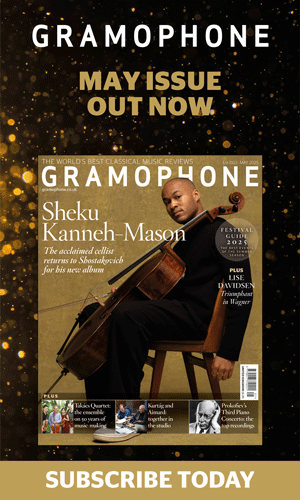Why can’t we trust our kids with music…and more?
Andrew Mellor
Wednesday, December 3, 2014
Last week, in the small Finnish municipality of Kemijärvi, a 10-year-old girl named Mili applied for the top job: leader of the local council. In her application, Mili promised she would ‘run down to the town hall and start working’ each day after school and that the requisite reduction in salary given her status would ‘make good savings for the town.’ In a final, challenging gesture to the local administration, Mili told Finland’s state broadcaster YLE that her application was ‘not some sort of joke’ and that she hoped it would be ‘read through to the end.’
If I’d come across that story any other week, I’m afraid I’d have found it little more than faintly amusing. But last week, I was also in Finland, in a small town called Jakobstad a few hundred kilometres south west of Kemijärvi. I was here to check out the second outing of a fledgling annual music festival called Rusk, founded by musicians Christoffer Sundqvist and Sebastian Fagerlund and focused on an extraordinary new architectural complex that unites art, business and the town as a whole.
Campus Allegro – a spectacular medley of two concert halls, a music school and conservatory, an art college, a library, two eateries and a bank all centred on a bustling ‘indoor street’ – seemed full of young people every time I walked into it. One lunchtime, after a ‘serious’ chat about the business of composing with Fagerlund, we broke off as an ensemble of 11-year-old string players gave a short recital in the foyer, beginning with the theme from Batman. Each day that followed, there were more young musicians on hand to entertain townspeople and festival-goers over lunch.
In the evening concerts, which included hardcore new works, folk and improvised music and a gorgeously played and programmed ‘concept’ concert built around Schubert’s Octet, there were children in the audience, children giving bouquets on stage and in one case children participating in a collaborative improvisation with their instruments and voices.
In the very last concert of the festival, the Jakobstads Sinfonietta gave a humbling performance of Beethoven’s Pastoral Symphony under the conductor Anna-Maria Helsing. And who’s in the Jakobstads Sinfonietta? As in similar small orchestral ensembles in Finland and Norway, it constitutionally includes a number of local students and their teachers among its ranks as well as established professionals. For this performance it was joined by the all-stars from the festival too: the likes of Pekka Kuusisto, Hervé Joulain and Sundqvist himself. At least three young kids sat transfixed in my row during Vasks’s Distant Light and Bjarnason’s Bow to String that preceded the Beethoven. I’m not great with kids; I never know what to say to them. But I caught the glance of one during the latter piece, and I reckon we both felt we were witnessing something wonderful.
The thing about Jakobstad is, it’s tiny. A population of 19,000 would put it on an approximate level with the village of Horsforth in Yorkshire. Its crosshatch of streets, though pretty by Finnish standards, is about as far from a throbbing metropolis as you can get. After you’ve spent a few adolescent years admiring the rococo architecture of Jakobstad’s town hall (not to mention the imposing town-centre factory that made Sibelius’s cigars), there’s not an awful lot left to do.
Apart, that is, from create. Campus Allegro cost a thrifty €45 million to build, and it’s a building that buzzes with creativity far more than the Barbican or the Lincoln Center. You feel it from the moment you walk in the main door, where students from the art college have pinned-up posters or spelled-out messages on the floor in coloured tape in a playful affront to the building’s neat corporate identity. At the other end, just before the ‘street’ slips down into an informal well of sofas and coffee tables, there’s a huge glacial rock emblazoned in red neon lights with Campus Allegro’s motto: ‘I can do anything I want’. At least, it used to be. The squiggling neon tube was continually broken by unruly visitors and was eventually removed. It might have been a series of accidents; it might have been a participatory reaction to the sentiment of the artwork itself. People here suspect the latter.
And if it was, it feels rather akin to Mili Kasurinen’s bold and slightly cheeky assertion that she could lead the council at Kemijärvi. But it’s also a telling endorsement of this town’s commitment to challenge its inhabitants to creativity. Touring the music school part of Campus Allegro is staggering; its facilities and spec would put a number of UK conservatoires in the shade (I had a go on one of the two bespoke three-manual organs) and this institution welcomes children far younger, all of whom are trusted with 24-hour access to the building and none of whom pay any fees. Cohabitation ensures that many of the musical activities here are cross-fertilised with filmmaking, designing, textile work, sculpting and painting – and vice versa. That makes for a remarkable start to anyone’s creative career – whether professional or amateur – and Rusk is fully in on the act: roping in numerous artists from the school to enrich is programmes and performances.
Jakobstad, and Finland as a whole, place extraordinary faith in their young. To see the benefits, you only have to come here and look around: at Rusk’s events and audiences, at Finland’s superlative creative exports (not to mention its high rankings in worldwide happiness indexes, despite the darkness outside) and at the forthright optimism of children like Mili. There are copious lessons we can learn from all of them, whether we’re artists, musicians, teachers, town planners or just plain old citizens. And if we want music and art to have a prominent future in prosperous, easily distracted Europe, they are lessons we can’t afford to ignore.







